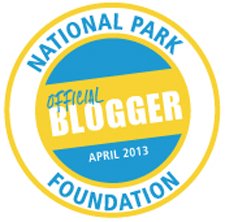Yosemite Photographers In The Early Days...
Incredible Challenges But Amazing Results
Glass Plate Photography, Their Labor Of Love!

Yosemite photographers back in the early days were a special breed of man. They had the eye of an artist capable of beautiful compositions of structure and light. They also were chemists, mixing complex emulsions and applying them to glass plates while in total darkness. Complicating things even further, because of the need for absolute darkness the preparation of the plates for exposure took place in cramped spaces provided by tents and wagons at the site.
The early Yosemite photographers were also mountain men capable of weathering the
hardships of the wilderness without modern gear. They managed to capture
their images in remote and often treacherous locations without
established trails.
Cameras were big, bulky and fragile. The
glass was heavy, the edges were often sharp and the plates were even
more fragile than the camera itself.
From a functional
standpoint, the light-sensitivity of the emulsion was quite low and
required long exposures to capture darker subjects. Light and sun-struck
features in an otherwise low-light scene were over exposed, and moving
objects like water and clouds blurred from the lengthy exposures.
The
only answer to this dilemma was the re-combination of two or sometimes
more separate glass plate negatives when producing final prints; each
original plate having been shot while optimizing the exposure of
critical elements in the scene!
Despite It All
Fortunately, despite all of the reasons that they shouldn’t have; some of these very early images have survived. Viewing them today can’t help but cause us to imagine what each of these men must have endured in the process of capturing these historic treasures.
During the Centennial celebration in Yosemite National Park in 1964, Bill and Mary Hood were National Park Service collaborators and historians. They spent their lives engaged in a search for existing examples of the work of the early Yosemite photographers that were active from 1859 to 1915. The help of librarians on the West Coast greatly aided this quest, but it was startling to find how few of the thousands of early prints still existed. Much of the material used in this article has been gathered by copying prints that are scattered among a variety of collections.
In 1964, the Hoods contributed the following historical review of some of the first Yosemite photographers.
"A Thousand Words"
Millions of spoken and written words have spread the fame of Yosemite Valley around the world, but perhaps even more effective has been the impact of the thousands of photographs depicting this tremendous chasm.
Picture taking with the enormous view cameras of the late 1850's was a very different matter to snap-shooting with the handy little cameras of today. It was a job for the professional, not a hobby for the general public.
Making a photograph in 1860 was a complicated operation. A portable darkroom had to be set up near each picture site. Here the glass plate was sensitized with an emulsion and returned for development while it was still damp; hence this method is known as wet-plate photography.
Exposures were long so that moving water lacked detail. Exposure latitudes were small and filters were unknown…thus clouds went largely unrecorded. By 1867 photographers had discovered how to "capture" clouds on a separate plate and impose them on the scenic print. Since only contact printing was known, pictures had to be made full size in the field. This involved great pieces of expensive glass, up to 18" x 22", and weighing over a pound apiece. The huge wooden box camera added some forty pounds to the already heavy load.

Advertising Yosemite To The World
The advertising potential of this new medium did not escape the notice of the railroad and stage line magnates or of the hotel proprietors of the West. In 1859 Messrs. Hite and Beardsley opened the first two-story hotel in Yosemite. To publicize this venture they invited James M. Hutchings to bring a party of friends for the grand opening. He was to obtain copy for a series of articles in Hutchings' California Magazine.
Also as part of the promotion, Robert Vance of San Francisco sent Charles L. Weed, to take a "Yosemite Panorama”. These 10" x 14" photographs were to be added to the firm's stock and to provide a basis for the very faithful engravings by Thomas Armstrong in Hutchings' five articles.
Weed covered the floor of the valley and took his heavy equipment to the base of Nevada and Illouette Falls. He also visited the Mariposa Grove of Big Trees, where he took the first photograph of the Grizzly Giant. He made some twenty scenic pictures and a set of forty stereographs.
He returned to Yosemite in 1864 when he reached the upper end of Little Yosemite and made two pictures from Panorama Cliffs. Twenty nine signed photographs from this second trip are in the New York Public Library today.
Prints from this series and stereos, taken from the same sites, were sold by Thomas Houseworth; leading us to believe that Charles Weed turned over these plates to Houseworth before disappearing from the San Francisco scene.
Carleton Watkin's "Mammoth Camera"
The next of the early Yosemite photographers was Carleton E. Watkins, who had been an operator for Vance in that firm's San Jose gallery…

In 1861 he decided to make a trip to Yosemite and had a mammoth camera constructed especially for that occasion, that would take 18" x 22" plates. His twelve-mule pack train must have been an impressive sight as it snaked its way down the steep trails. We can only regret that the difficulties of 1861 photography prevented him from taking a picture of the cavalcade.
Watkins was completely fascinated by Yosemite. His San Francisco studio was called "The Yosemite Gallery" and he returned again and again between April and October of that year to take and retake pictures of the cliffs and waterfalls.
In 1863 he had his great camera packed to the top of Sentinel Dome and the shadows in this panorama tell us he was there all day as his own shadow was cast on the foreground in the print that includes El Capitan.
Playing The Role

On rare occasions Watkins would pose in his own photographs such as this one in which he plays the part of a miner. The wagon in the background holds his photographic equipment and served as his darkroom.
The Father Of Motion Pictures
In 1867 another great artist arrived in Yosemite. This was Eadweard J. Muybridge, an Englishman, who had traveled up and down the Pacific Coast even more widely than Watkins had. Perhaps the challenge of capturing the magic of falling and flowing water as seen in the valley, inspired him to become a pioneer in the field. His technical developments led him to fame as a recorder of animals in motion and earned him the title of "Father of the Motion Picture."

Muybridge undertook a second journey to the Yosemite in 1872, and from this trip he published 50 large images and numerous medium sized ones, besides 457 beautiful stereos. He took his big camera over Clouds Rest and down to Tenaya Lake as well as along both rims of the Valley.
He chopped down trees that obscured his view and did not hesitate to be lowered with his equipment down steep cliffs to obtain the compositions that he had in mind… Stereo number 1385 shows him oblivious to vertigo peering 3000 feet into the depths of the valley while seated on the furthermost edge of the overhanging rock at Glacier Point.
The Amazing Stereoscope
The stereoscope had been invented in 1835 for drawings. By viewing two images made at slightly different angles through an instrument that brought them together visually, a three dimensional effect could be obtained.
This invention was soon applied to photographs, but it was only after the advent of the dry-plate process that stereographs could be marketed in quantity. So as a general rule, in addition to the large view camera they carried in the field a double-lensed instrument for this purpose. The prints, mounted on stout cardboard and stored in light-proof boxes, survive in good condition to this day!
Yosemite was a perfect subject for three dimensional pictures. Perhaps these popular small photos did even more than the large prints to bring this scenic wonder of the world to the attention of untold thousands.
Yosemite Photographers: Bierstadt, Lawrence, Houseworth and Pond
Besides the stereos taken by Weed, Watkins and Muybridge, many eastern photographers came to Yosemite to take sets. Charles Bierstadt of Niagara Falls came west with his brother Albert, the famous artist. Lawrence and Houseworth of New York and San Francisco list 30 Yosemite stereos in their 1865 catalogue; later they added many more. John P. Soule of Boston copyrighted a set of 180 Yosemite stereos in 1870.
C. L. Pond came from Buffalo, N. Y. and took a large series of photographs. He himself may be discovered in one titled: The Photographer's Camp. In this photo he lies fully clothed, including stiff collar and tie, on the slope above Glacier Point. Beside him lies his hat, his gun, and a tall bottle of "Snake Medicine." His blankets spread flat prove him to be more interested in the picture than in warmth.
In 1870 the Anthony Brothers of New York sent T.C. Roche to take a series to be called "The Glories of Yosemite". In reality, clues would seem to indicate that they actually acquired a set of high country stereos from Muybridge.
In 1874 photographer J. Reilly, late of Niagara Falls, wrote to the periodical The Philadelphia Photographer deploring the fact he could get no better prices for his finest work than that received by slipshod workers. He tells of his trips during the previous four years into the back country of the Sierra Nevada and how…
“at ten thousand feet, ten feet of snow lay in the month of August, and no water was to be found short of one or two miles to wash negatives with. This difficulty was overcome by building a brush fire and heating stones in it; then filling a bucketful of snow and placing the hot stones therein. In a few minutes we had plenty of soft water, and by cutting a top off one of my socks, and tying it around the faucet, I was enabled to get clean water, and so do clean work, and on that trip of four weeks I made some fine cloud effects. . .”
John Muir accompanied Reilly on this trip. Their names appear together in Albert Snow's “La Casa Nevada” hotel register on several occasions. B. F. Bade's edition of Muir's letters show him writing about butterflies… "I collected them upon Mount Hoffmann, but was so busy in assisting Reilly that I could not do much in butterflies."
In Reilly stereo number 518, their camp is shown. A flower press is seen leaning against the tent, attesting to Muir's other "occupations" on this trip.
George Fiske
The cumbersome wet-plate method continued until the late 1870's when the invention of the dry-plate process eliminated the necessity of development in the field. The life of the landscape photographer was also made easier by the increasing popularity of the 8x10 and smaller prints for albums.
Among the first Yosemite photographers to profit from this innovation was George Fiske, who had learned the business under Watkins. His name first appears in the register of Peregoy’s Mountain View House in 1872. He became a year-round resident of Yosemite Valley in 1880 where he was greatly loved and respected.

Fiske was regularly seen traveling around the Valley in a buggy pulled by a handsome black horse during the warm summer weather and was often called out to photograph visitors at their campsites.
After unloading his cumbersome camera equipment he moved it to where it was needed in a modified wheelbarrow that he nicknamed his “Cloud Chasing Chariot”.
During the cold winter months his horse and buggy were retired for the season, and Honest John the burrow was hitched up to pull Fiske's donkey sleigh.

Of the many beautiful Fiske pictures that remain, perhaps the most spectacular are of the seasonal changes in the Valley, particularly those of the Valley under deep snow.
What Remains Of Their Work?
So what now remains of all this labor…the great cameras…the tons of glass? Of the latter practically nothing! It was fragile at best, it cracked easily, shattered if dropped. And it was expensive, hence if a picture did not sell well the plate was washed clean of its' emulsion,(and the image), and used again.

The wooden buildings where the plates were stored seemed to burn with regularity, and Fiske lost all but a third of his plates in one disastrous fire.
In June 1904 the Mariposa Gazette reported that the City Commissioners had reduced Fiske’s rent to $1.00 "because of his age and the almost total loss of his property."
The remaining plates became the property of the Yosemite Park and Curry Co. until their storage place, too, went up in flames. The plates of Watkins and many others were later destroyed in the San Francisco fire that followed the great earthquake of 1906.
What of all the albums full of prints, so carefully prepared? Sadly, many families have discarded them. Today this "rubbish" is sought by the great libraries, and some have already acquired representative collections. Prints are often soiled and faded, but many are still in excellent condition.
We who love this kind of research hope that there are still a few attics containing treasured keepsakes that will yield further examples of the work of Yosemite's first photographers.
Meanwhile we stand near their favorite sites and watch today’s photographers snapping in happy abandon with their modern hand-held cameras. One can’t help but wonder what Weed, Watkins, Muybridge and the others would have done if given this technology!
We believe they would applaud it and plunge headlong into a world of new possibilities…continuing their important work of bringing the joys and beauties of Yosemite to the world.
To return to the Home Page from Yosemite Photographers please click here.
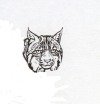
Yosemite's Rich And Interesting History
Yosemite's Half Dome... The First Climber
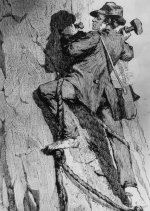
Stephen Mather Father Of The National Park Service
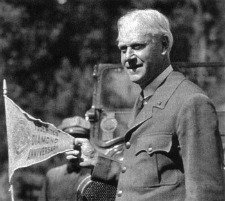
Yosemite's Historic Big Oak Flat Road
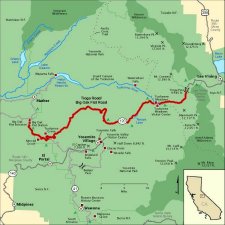
The Historic Big Oak Flat Road
Stories Of The Yosemite Stagecoach Drivers. A Book And Kindle eBook
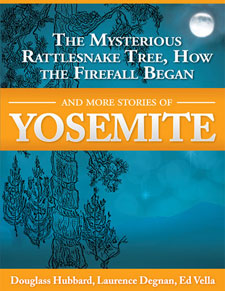
Stories Of The Yosemite Stagecoach Drivers For Kindle
Yosemite's Historic Stage Route...The Wawona Road
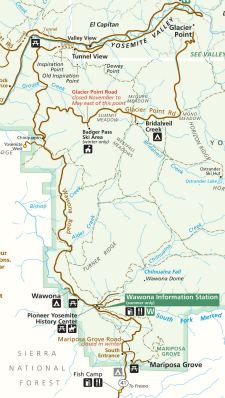
Follow Yosemite's Historic Wawona Road.







